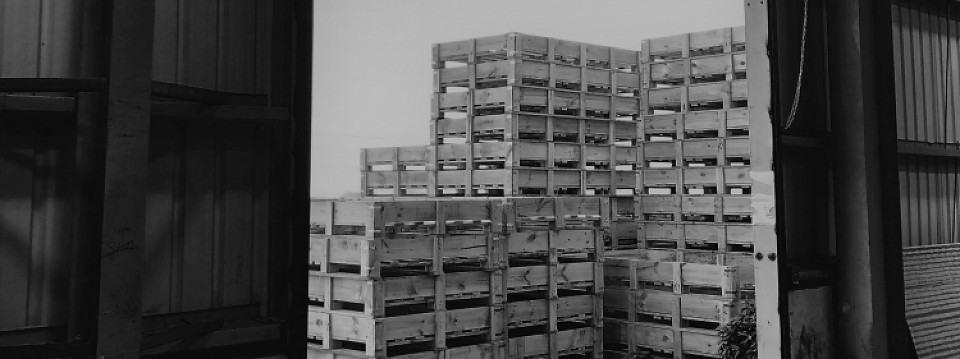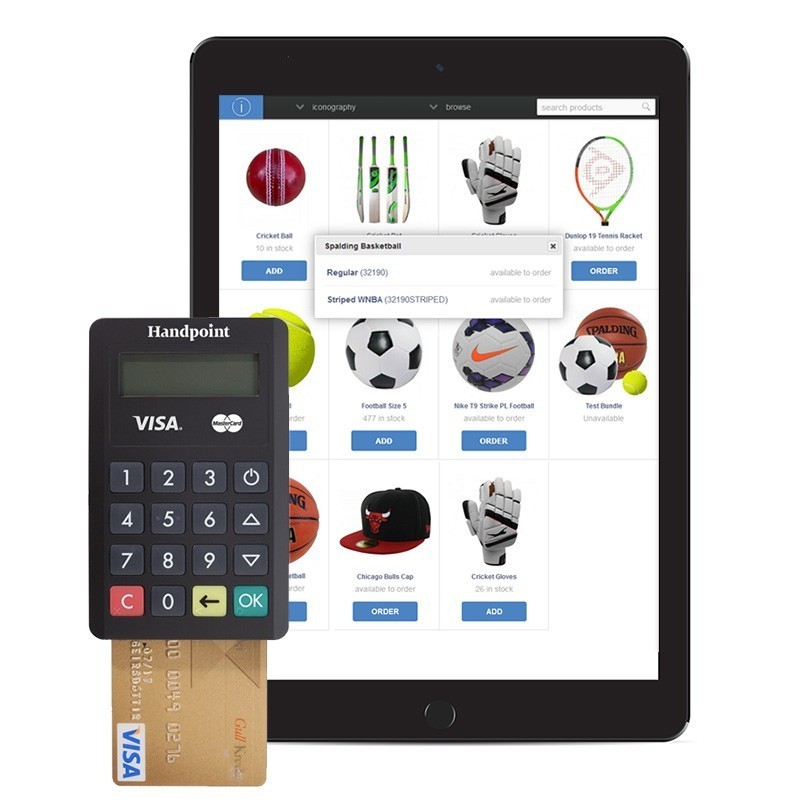Multichannel order management systems
A comprehensive checklist
The need for multichannel
For a customer to benefit from a seemingly frictionless shopping experience it requires you and your team to have done the hard work in solving the technical and process puzzles of your order management system.
And where your retail business sells to customers both online and instore, as is most likely these days, you know the need is for truly multichannel order management. One surefire way to make this a success is getting the most suitable, and best order processing software in place.
Retrieve a quote
With Unified Commerce, you can provide the best of both worlds; a personalised instore service offering everything your customers need at the best price you can offer.
Would you like to know more?Order management software by Iconography
Did you know that our Unified Commerce platform mixes eCommerce, RMS, CRM and EPoS to provide an award winning omnichannel solution?
It combines all of these into a single system with a single database for stock management for 100% stock visibility across all channels.
What is an order management system (OMS)?
An order management system is any process and collection of tools that exists to ensure a customer’s desire to make a purchase is successfully acted on and fulfilled. In other words the process by which a customer gets the goods and you get paid.
These days, a unified system incorporating order processing software is the best option to replace fragmented and labour intensive work arounds. Obsolete software solutions that rely on a flaky integration or a spreadsheet supremo to perform data miracles is not a reason to be complacent and stick with the status-quo.
Whatever plan you have in mind or ‘proven’ solution already in place, it helps to start by looking at the main components of a multichannel order management process. These are;
1. The offer for sale with product and pricing information
2. Simple ways for the customer to place an order and know it has been received
3. Picking, packing and shipping the product
4. Order fulfilment, delivery and the returns option
5 benefits of using an order management system
While the basic mechanics of selling and fulfillment have not changed, it's the speed and flexibility demanded by today’s customer that is driving the need to upgrade. Combine this with the need for unified multichannel order management, and while the cost of getting it wrong is huge, it does mean significant benefits are gained from supporting your order management system with the right order processing software.
By bringing information and processes together into one unified order management system, you can process orders more quickly and speed up dispatch times. And by introducing automation to some of the processes you will significantly reduce the margin for error.
The key benefits of putting in place a modern order management system are:
1. Better intelligence
Get a 360°, single view of your customers information and interactions with you and your products and promotions

2. Improved customer experience
Align and allocate inventory to accurately support customers expectations on multichannel order management e.g. retrieving an instore quote online

3. Less manual work
Pick lists can be generated to reduce errors in dispatch. Automated supplier ordering resolves waiting times, shipping schedules and variable delivery rates

4. Better service
Provide easy to use tracking, fulfilment and returns processes

5. Accurate reporting
Implement a data-driven approach to customer service and marketing by gathering and clearly reporting the analytics for customer interaction and management evaluation

Top multichannel order management system features
When researching the right multichannel order management system for your business, there are some absolute must have characteristics. Without these core features, you run the risk of leaving gaps in your processes leading to wanted time and poor customer experiences.
We’ve broken down 5 key characteristics of a great order management system and listed the features you must look for to fulfill the demanding requirement of modern, multichannel retail.
Unified
Make sure the order management element is one part of a fully unified system including eCommerce, ePoS, retail management and CRM. This is the only way to avoid unnecessary integration headaches and get the benefit of real time accurate data.
Inclusivity
The system must be able to accept orders from all your sales channels using multiple payment options. There should be no situation or reason to exclude someone wanting to place an order with you.
Accuracy
The system should allow for real time and automated updates to inventory levels and availability of stock to sales channels. This means you can pause item listings when you sell out to avoid overselling or, better still, forecast stock levels in order to avoid stock-outs.
Flexiblity
With a single database of products at the heart of the system and a unified view of stock, fulfilment of orders can be made from any localised stockholding (store or warehouse). And it follows that click and collect, and returns, should be available from any single location.
Automation
Routine and time intensive tasks should be streamlined where possible. This can be done with preset routines and alerts that push and pull information and notifications. One example would be a process to aggregate and automate purchase order management to achieve minimum quantities and another example would be to use information in the system to clearly calculate delivery time expectations for both customers and customer service teams.
OMS considerations for physical retailers
Where physical retail is a main focus and eCommerce an extension of the in store experience there are some distinct opportunities to be had from a unified order management system such as OMNIS:
Retrieve an instore quote online
By connecting the eCommerce and CRM with the EPoS component it means the common access to inventory linked to the website allows customers to retrieve an instore quote online. From a customer perspective it allows them to visit the store to make their selections and then think about it, maybe discuss it with a partner or visualise how the item will work in context.
When they are ready they can either amend the order or confirm it online. The instore sales person can give the customer the time to review the purchase and they don't have to make a return trip to complete the order, or end up buying elsewhere.

Retrieve a quote
Today, anyone can walk into any of And So to Bed's 16 nationwide locations and sit down with one of And So To Bed's sales representatives for a personalised quote. Once they get home, it's a simple matter of clicking on a link and entering their payment details.
In the CMS, OMNIS keeps track of outstanding quotes, commission reporting and can even diarise follow ups, making And So To Bed more efficient and driving up conversions.
Instore kiosk
This installation of an instore kiosk has strong appeal to any retailer that has limited floor and store space. By offering for sale items that aren't physically held in the store the opportunity is to attract more interest from customers by offering a wider product range and thus maximise the value of any one order with upsell and cross sell opportunities.
Combined with a dropship strategy fulfilled by your suppliers neither your store or warehouse need ever see the product. Alternatively, providing an interactive kiosk in store, or issuing store staff with tablets, you can extend the browsable product offering significantly.
Tracking inventory from purchase order to sale
This is about bringing greater levels of accuracy and control that ensure the right quantity of goods or services is delivered in a specified time frame. Unified Commerce software that includes order management functionality provided a framework for accurate inventory control and purchase order tracking. Significant cost savings, greater efficiency and more productive procurement activities result from getting this right.
The automated nature of online inventory control workflows, PO templates, hierarchy-based roles and approvals removes the repetitive manual tasks and potential for human error from the PO process. Eliminating unnecessary paperwork, making purchase order tracking more streamlined and easier for companies to keep track of the many stages of ordering and paying for the items their operations or consumers require.
For a full description of the OMNIS features and functions and the difference they deliver, see our Ebook “Choosing the best Unified Retail Management System” here.
Integrating inventory, customer, retail and order management software
Trying to integrate an eCommerce website with an offline POS and a legacy back-office retail management software can cause more problems than it solves.
A web-first, unified system
By focusing in and understanding the steps a customer takes from finding products to placing an order and taking delivery, it’s possible to see why the unified approach successfully removes the limitations, constraints and operational inefficiencies associated with outmoded alternatives to multichannel order management.
For many businesses it’s still a challenge to successfully resolve the complexity of capturing, tracking, and fulfilling orders across multiple sales channels and touch points. A web-first and unified system means the same data is available in real-time to support e-commerce, retail management systems and POS.
Storing all your data in one system reduces the risk of error as there is no need for a transfer process from one system to another. One or more of your stores, head office and warehouses can see it all at once, real-time. Integrations between these core functions are an unnecessary link in the chain and when they break, as they often do, it brings your order taking to a halt.
A unified approach to meeting your order management system requirements will cover you on the following:
-
Enterprise eCommerce
-
Cloud-based PoS
-
Retail Management Suite
-
Customer Relationship Management
A multichannel world
Meeting or exceeding customer needs and expectations from product ranges to service offerings is the route to profitable sales, recommendations and return visits. This is known. How to organise yourself, your systems and your team to deliver at every step of the way requires careful and detailed planning.
The reality of the multichannel world where sales are mixed between instore and through multiple online trading platforms means a fragmented siloed order management system must give way to order management software that is unified and real time.
The benefits of this, in addition to improving the customer experience, are more information that is accurate and useful, more efficiencies from automation, and a reduction in manual and often unnecessary work.
Fully featured order management software when part of a unified omnichannel retail software solution is transformational for your business.
OMNIS was born out of the needs of a leading direct to consumer brand to support their online and instore retailing formats in the UK market. They were facing the same problems and challenges that present obstacles for any retailer.
As a progressive and forwarding thinking brand, our client wanted to remove the limitations, constraints and operational inefficiencies associated with integrating an eCommerce website with offline EPoS and legacy back office retail software.
We quickly saw the vast potential OMNIS possessed. It’s a need we’ve recognised with many other retailers and DTC brands that have similar aspirations and want to remove the restrictions of old retail technology and software.
In OMNIS you can create multiple warehouses with any number of locations, place purchase orders and complete stock transfers. We have a full range of reporting and administrative control suite. Together, these give you complete control and oversight over your stock across all channels.


Online and instore retail
OMNIS Retail is a pioneering new retail solution that has been driven by D2C brands & niche retailers looking to the future. A single database eliminates any data integration issues between outdated systems, instead providing a cloud-based omnicommerce retail solution fit for the 21st century.
20th December 2021
The team were always able to answer any questions we had and any issues we come up against were resolved
Craig Silvain, BM Steel
Get in Touch